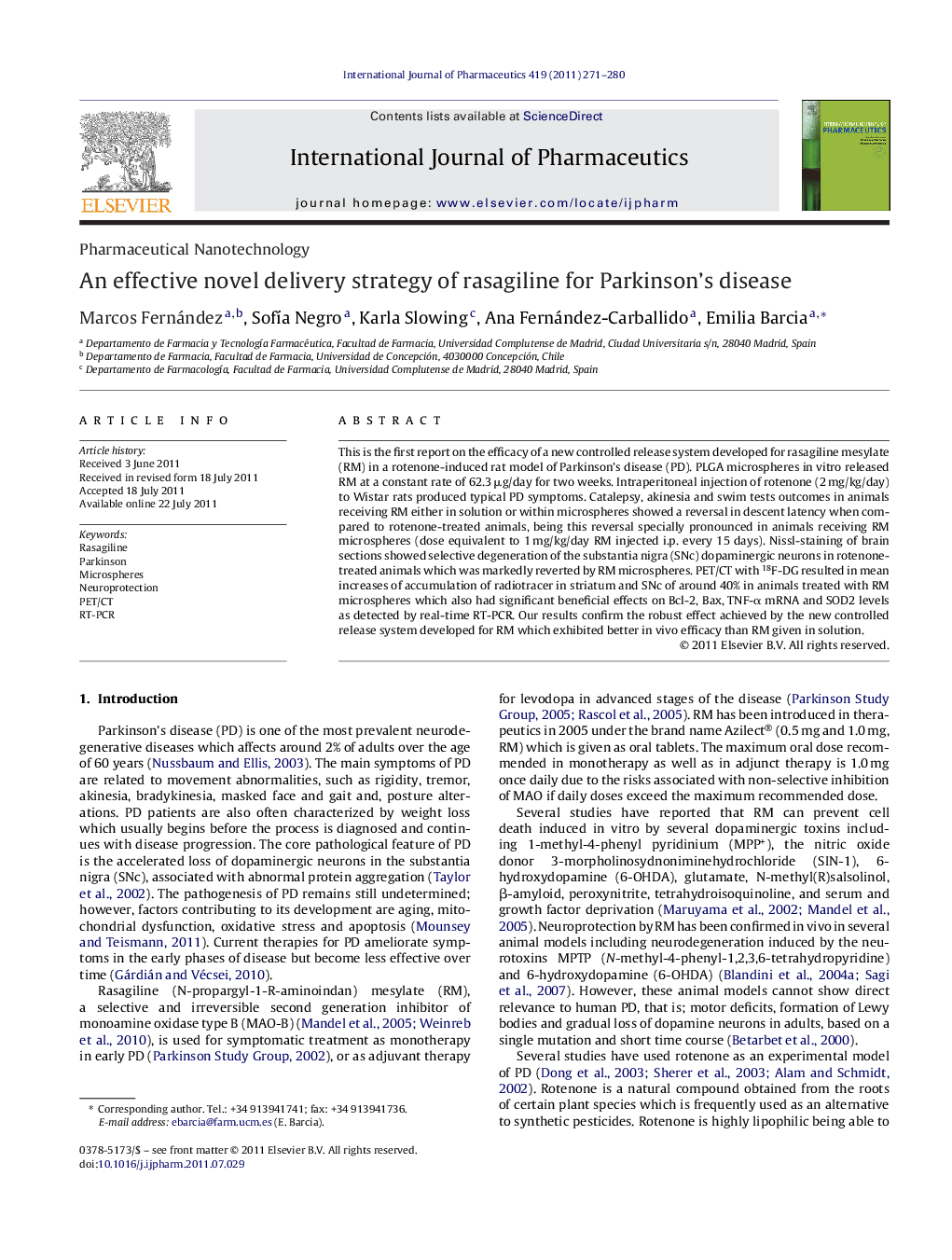| Article ID | Journal | Published Year | Pages | File Type |
|---|---|---|---|---|
| 2503314 | International Journal of Pharmaceutics | 2011 | 10 Pages |
This is the first report on the efficacy of a new controlled release system developed for rasagiline mesylate (RM) in a rotenone-induced rat model of Parkinson's disease (PD). PLGA microspheres in vitro released RM at a constant rate of 62.3 μg/day for two weeks. Intraperitoneal injection of rotenone (2 mg/kg/day) to Wistar rats produced typical PD symptoms. Catalepsy, akinesia and swim tests outcomes in animals receiving RM either in solution or within microspheres showed a reversal in descent latency when compared to rotenone-treated animals, being this reversal specially pronounced in animals receiving RM microspheres (dose equivalent to 1 mg/kg/day RM injected i.p. every 15 days). Nissl-staining of brain sections showed selective degeneration of the substantia nigra (SNc) dopaminergic neurons in rotenone-treated animals which was markedly reverted by RM microspheres. PET/CT with 18F-DG resulted in mean increases of accumulation of radiotracer in striatum and SNc of around 40% in animals treated with RM microspheres which also had significant beneficial effects on Bcl-2, Bax, TNF-α mRNA and SOD2 levels as detected by real-time RT-PCR. Our results confirm the robust effect achieved by the new controlled release system developed for RM which exhibited better in vivo efficacy than RM given in solution.
Graphical abstractCatalepsy and akinesia results, and PET/CT 18F-DG neuroimages from animal groups G1: control group; G2: rotenone-treated control group; G4 and G6: rotenone-treated animals also receiving; G4: RM-loaded PLGA microspheres (amount of microspheres equivalent to 15 mg/kg RM injected every 15 days), and G6: RM in saline (1 mg/kg/day for 45 days).Figure optionsDownload full-size imageDownload as PowerPoint slide
